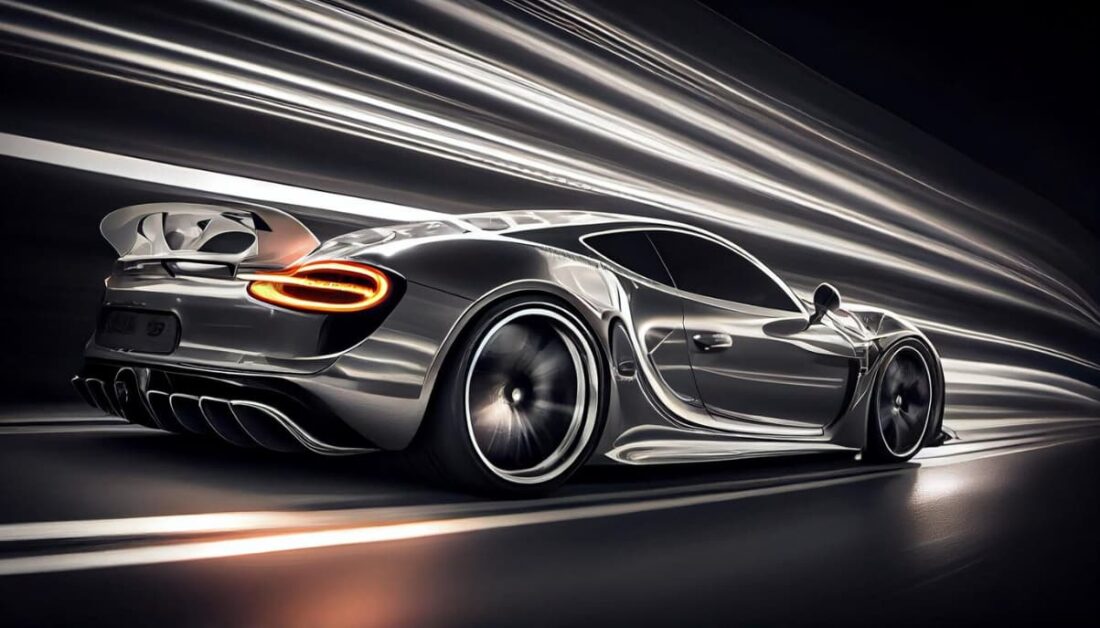Decoding the Concept and Purpose of Concept Cars
Getting to Know a Concept Car: The Basics and Purpose
Concept cars are visionary models that spark creativity and foster progress in the automotive industry. They embody futuristic designs and high-tech advancements that may potentially define the cars of tomorrow. All car manufacturers have an array of concept cars that never make the transition to production. Still, these prototypes often influence the design and technological advancements of other vehicles that do make it to the manufacturing phase.
This comprehensive guide delves into the essence of a concept car, explores the reasons and methods behind its development, and uncovers how automotive prototyping contributes to the creation of fascinating prototype cars. As we explore the concept and purpose of concept cars, a key element to unravel is the innovative design of car dashboards, shedding light on their significant role in shaping the overall conceptual automotive experience.
Understanding Concept Cars
Concept cars, also known as prototype cars, represent the fundamental blueprint of a vehicle, conceptualized on design sketches. They mark a crucial phase in the design and development of new vehicles. Specialized teams of experts within car manufacturers work on different aspects of a concept car. These prototypes must fulfill certain conditions such as practicality, affordability, market compatibility, and safety before the design goes into mass production.
These prototype cars play a pivotal role in projecting the envisioned final product. It helps in determining the car’s final form – whether it will be an MPV, SUV, Coupe, Hatchback, or Sedan. Moreover, it provides clear directives for designers and pre-production teams. Today, designers worldwide develop concept car models and share their creations on online platforms, allowing the public to partake in their visionary projections.
Why Concept Cars Are Developed
Concept cars are the physical manifestation of automakers’ future-oriented ideas and imaginations. They primarily serve as test-beds for groundbreaking technologies and designs. While not all concept cars transition to actual market products, their design elements often influence the components of regular vehicles that do.
Car manufacturers experiment with prototype cars to explore potential technologies and design elements, converting their ideas into tangible products through creating concept models. This also helps them gauge consumer reactions to their designs. With the advancements in prototype car development, car enthusiasts can stay updated on the future prospects of the industry.
The key purposes of developing concept cars are:
- Testing market feasibility by understanding consumer preferences;
- Serving as a potential publicity tool for the manufacturer;
- Allowing car manufacturers to experiment with various technologies planned for future productions;
- Inspiring and challenging industry norms and creating game-changing ideas.
Concept Car Designs: How Is It Done?

Concept cars are an amalgamation of advanced structure and innovative concept designs. These cars usually feature exquisite materials such as polished alloys, carbon fiber, or even paper, making them stand out due to their exclusivity. Today’s concept cars manifest more comprehensive design aspects compared to older models, which were primarily wooden structures or metal models.
The modern concept cars provide almost all details related to the vehicle’s powertrain and other vital characteristics, making them even more appealing. Although they aren’t usually fully functional cars, they offer exclusive design concepts and are showcased at automotive shows.
After extensive market research and analysis of customer expectations, manufacturers outline the prototype car using computer technology, cost calculations, and design aesthetics, and then create a real-life model. This meticulous process of concept car designing may take several years before the concept becomes a reality.
Impact of Rapid Prototyping Technologies on Concept Cars
Rapid prototyping technology serves as a versatile tool in the automotive field, enabling customers to have a say in their car manufacturing process. It gives them the liberty to customize their cars according to their preferences.
Automakers and engineers use this technology to create and test multiple iterations of concept cars and new technologies. Rapid prototyping technologies include:
| Technology | Role in Concept Car Design | Benefits |
|---|---|---|
| 3D Printing | Vital role in initial concept car stages, turning ideas into prototypes | Allows testing functionality through functioning models |
| Custom CNC Machining | Creates precision prototype car parts with tight tolerances | Especially beneficial for complex-designed parts |
| Vacuum Casting | Enables faster prototype production with silicone molds | Ideal for smaller batches of prototypes |
3D Printing
3D printing has revolutionized the automotive industry, especially in the early stages of concept car development. This technology enables the transformation of innovative ideas into functional car prototypes swiftly, thanks to rapid prototyping. Automotive designers utilize large-scale 3D printers to create operational models of cars. The versatility of 3D printing is evident in its compatibility with various materials, paving the way for diverse possibilities in car part fabrication.
Custom CNC Machining
Custom CNC (Computer Numerical Control) machining leverages the precision of 3, 4, or 5-axis CNC machines to fabricate metal and plastic parts for cars. This technique is crucial in producing prototype parts that require exact tolerances and high precision. CNC machining is particularly beneficial for creating complex components like engines and headlights. It ensures prototypes are not only functionally accurate but also aesthetically pleasing, with superior surface finishes.
Vacuum Casting
Vacuum casting offers a fast and efficient method for product manufacturing, particularly suited to the automotive industry. Engineers use this technique to produce high-quality, reliable prototypes for testing, utilizing silicone molds. Although vacuum casting is most effective for small-scale prototype batches, it remains a vital tool in the prototyping process, enabling quick and accurate creation of parts.
Differences Between Concept Vehicles and Commercial Vehicles

Concept cars are born from futuristic visions and ideas. They serve as a prototype to test new technologies and design, acting as the foundation of automotive innovation. On the other hand, commercial vehicles are designed with practicality and marketability in mind, focusing more on current consumer needs.
Automakers are continuously innovating, shifting their focus from traditional diesel or petrol vehicles towards electrification and self-driving technologies. The production cost of concept cars is significantly higher than commercial vehicles, which are available for purchase by consumers. Commercial vehicles include fleet vehicles, company cars, or other vehicles used for commercial purposes.
Concept Vehicles:
- Concept vehicles represent the embodiment of futuristic ideas and imagination in the automotive industry. They serve as prototypes, pivotal in the development and testing of new technologies, laying the foundation for innovation. The creation of concept cars is essentially a venture into realizing what once seemed unattainable;
- Traditionally, automakers concentrated on producing diesel and petrol vehicles that resonated with consumer preferences. However, the industry is now shifting its focus towards electrification, aiming for a future dominated by electrified and autonomous vehicles. Concept cars stand out distinctly from commercial vehicles or production models due to their unique design, advanced technology, and higher production costs.
Commercial Vehicles:
- In contrast to concept vehicles, commercial vehicles are readily available for purchase and use, often serving practical business purposes like transporting passengers, goods, or both. The Federal Motor Carrier Safety Administration (FMCSA) categorizes a commercial vehicle as any self-propelled or towed motor vehicle used on highways for interstate business, carrying passengers or cargo;
- A vehicle is classified as commercial based on its registration under a company or title. The spectrum of commercial vehicles ranges from small cars to large trucks, encompassing fleet vehicles, company cars, and other vehicles employed for commercial activities.
Conclusion
Concept cars represent the future of the automotive industry. These revolutionary prototypes help in showcasing and exploring innovative ideas while sampling consumers’ opinions on various concepts, technologies, and designs. Despite not always making it to production, these concept cars often influence the design and technological advancements of other vehicles that do. Rapid prototyping technologies have revolutionized the manufacturing process, contributing to the creation of ground-breaking prototype cars.
Frequently Asked Questions
Concept cars are regular features at car shows. However, due to high production costs and various other factors, most of them never transition to the production stage.
Due to legal reasons and the fact that they often do not meet emission regulations and safety standards, concept cars are usually not sold to the public.
The 1938 Buick Y-Job is considered the oldest concept car. It showcased a vision of the evolution of automobiles over the next 10 to 20 years.
While concept cars may look fantastic, they are not always drivable. They represent the vision and aspirations of future cars rather than being designed for practical use.

Leave a Reply